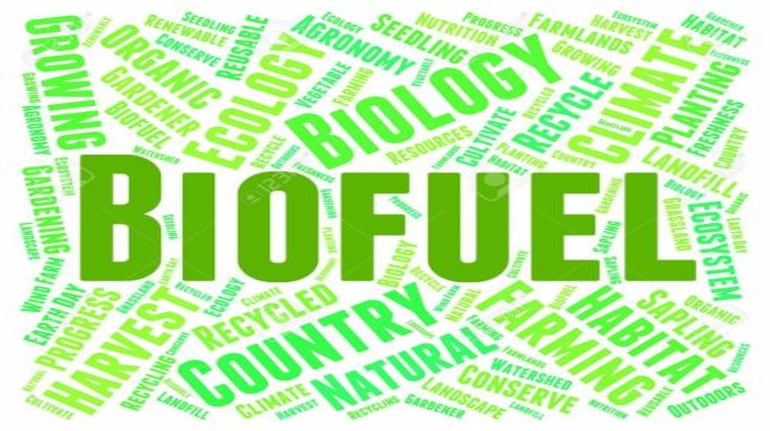Global Biofuel Alliance guidelines expected in FY24 itself: Indian Biofuel Association Chairman
Global Biofuel Alliance guidelines expected in FY24 itself: Indian Biofuel Association Chairman Moneycontrol



GBA is an alliance of countries and organisations to facilitate the adoption of biofuels
Introduction
The Indian Biofuel Association (IBA) expects the government to announce guidelines for the Global Biofuel Alliance (GBA) in the financial year 2023-24 itself, according to Chairman Gaurav Kedia. The GBA, which is an alliance of countries and organisations aimed at promoting the adoption of biofuels, was announced by Prime Minister Narendra Modi at the G20 Summit. However, specific guidelines regarding the alliance’s goals have not yet been announced.
Expectations for GBA
Kedia stated that there are high expectations surrounding the GBA, and he hopes that the government will soon provide clarity on how to proceed with it. He emphasized the need for localized solutions for biofuels in India, as the country has an abundance of agricultural waste. While the US focuses on maize and Brazil on sugarcane for biofuels, India must prioritize agricultural waste and handle biofuels in a localized manner.
Support for GBA
The global alliance, proposed by India, has garnered support from 19 countries and 12 international organizations at the G20 Summit. Major biofuel producers such as the US and Brazil, as well as countries like Bangladesh, Canada, and Italy, have joined the alliance. International organizations including the World Bank, the World Economic Forum, and the International Energy Agency have also agreed to be a part of the alliance.
Goals of GBA
During the G20 Summit, the government stated that the GBA will facilitate the creation of a virtual marketplace to connect industries, countries, ecosystem players, and key stakeholders. It will also serve as a central repository of knowledge and a hub of experts in the field of biofuels.
Sustainable Aviation Fuel
Union Minister of Petroleum and Natural Gas Hardeep Singh Puri highlighted one of the major implications of the GBA launch: the use of sustainable fuel in aircraft. He mentioned that sustainable aviation fuel (SAF) with 1 percent blending of biofuel would benefit 500,000 farmers in India. Unlike ethanol blending in petrol, India currently does not have a mandate for biofuel blending with aviation fuel.
Comparison to International Solar Alliance (ISA)
Kedia expects the GBA to follow a similar growth trajectory as the International Solar Alliance (ISA). He mentioned that when the ISA was first announced, there was uncertainty surrounding its purpose and regulations. However, it gained momentum when it signed an agreement with the World Bank to promote solar energy in various countries. Kedia believes that the GBA will experience a similar growth trajectory.
Conclusion
The Global Biofuel Alliance (GBA) holds great potential for promoting the adoption of biofuels and addressing sustainable development goals. With the support of multiple countries and international organizations, the GBA aims to create a virtual marketplace, share knowledge, and connect experts in the field of biofuels. By prioritizing agricultural waste and exploring localized solutions, India can contribute significantly to the alliance’s goals and promote sustainable fuel usage in various sectors.
SDGs, Targets, and Indicators
| SDGs | Targets | Indicators |
|---|---|---|
| SDG 7: Affordable and Clean Energy | 7.2: Increase substantially the share of renewable energy in the global energy mix | No specific indicators mentioned in the article |
| SDG 8: Decent Work and Economic Growth | 8.4: Improve progressively, through 2030, global resource efficiency in consumption and production and endeavour to decouple economic growth from environmental degradation | No specific indicators mentioned in the article |
| SDG 12: Responsible Consumption and Production | 12.2: By 2030, achieve the sustainable management and efficient use of natural resources | No specific indicators mentioned in the article |
| SDG 13: Climate Action | 13.2: Integrate climate change measures into national policies, strategies, and planning | No specific indicators mentioned in the article |
| SDG 15: Life on Land | 15.1: By 2020, ensure the conservation, restoration, and sustainable use of terrestrial and inland freshwater ecosystems and their services, in particular forests, wetlands, mountains, and drylands, in line with obligations under international agreements | No specific indicators mentioned in the article |
1. Which SDGs are addressed or connected to the issues highlighted in the article?
- SDG 7: Affordable and Clean Energy
- SDG 8: Decent Work and Economic Growth
- SDG 12: Responsible Consumption and Production
- SDG 13: Climate Action
- SDG 15: Life on Land
2. What specific targets under those SDGs can be identified based on the article’s content?
- Target 7.2: Increase substantially the share of renewable energy in the global energy mix
- Target 8.4: Improve progressively, through 2030, global resource efficiency in consumption and production and endeavour to decouple economic growth from environmental degradation
- Target 12.2: By 2030, achieve the sustainable management and efficient use of natural resources
- Target 13.2: Integrate climate change measures into national policies, strategies, and planning
- Target 15.1: By 2020, ensure the conservation, restoration, and sustainable use of terrestrial and inland freshwater ecosystems and their services, in particular forests, wetlands, mountains, and drylands, in line with obligations under international agreements
3. Are there any indicators mentioned or implied in the article that can be used to measure progress towards the identified targets?
No specific indicators are mentioned or implied in the article that can be used to measure progress towards the identified targets.
4. SDGs, Targets, and Indicators
| SDGs | Targets | Indicators |
|---|---|---|
| SDG 7: Affordable and Clean Energy | 7.2: Increase substantially the share of renewable energy in the global energy mix | No specific indicators mentioned in the article |
| SDG 8: Decent Work and Economic Growth | 8.4: Improve progressively, through 2030, global resource efficiency in consumption and production and endeavour to decouple economic growth from environmental degradation | No specific indicators mentioned in the article |
| SDG 12: Responsible Consumption and Production | 12.2: By 2030, achieve the sustainable management and efficient use of natural resources | No specific indicators mentioned in the article |
| SDG 13: Climate Action | 13.2: Integrate climate change measures into national policies, strategies, and planning | No specific indicators mentioned in the article |
| SDG 15: Life on Land | 15.1: By 2020, ensure the conservation, restoration, and sustainable use of terrestrial and inland freshwater ecosystems and their services, in particular forests, wetlands, mountains, and drylands, in line with obligations under international agreements | No specific indicators mentioned in the article |
Behold! This splendid article springs forth from the wellspring of knowledge, shaped by a wondrous proprietary AI technology that delved into a vast ocean of data, illuminating the path towards the Sustainable Development Goals. Remember that all rights are reserved by SDG Investors LLC, empowering us to champion progress together.
Source: moneycontrol.com

Join us, as fellow seekers of change, on a transformative journey at https://sdgtalks.ai/welcome, where you can become a member and actively contribute to shaping a brighter future.







